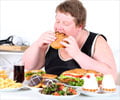
‘Fresh and healthy foods are expensive and unaffordable in poor households, which influences their unhealthy food choices, thereby increasing rates of obesity among them.
’
Tweet it Now
For the research, scientists analyzed obesity data collected by the Centers of Disease Control and the Robert Wood Johnson Foundation between 1990 and 2017 at state level, and 2004 and 2013 at county level. Researchers then compared these obesity rates with the median household income from the U.S. Census. The study shows that since 1990, the correlation between household income and obesity rate has grown steadily, from virtually no correlation to a very strong correlation by 2016.
Poor people in America are disproportionately affected by obesity. In the decade from 2004 through 2013, obesity increased about one percent on average among the top 25 wealthiest U.S. counties. Averaged among the 25 poorest U.S. counties, the obesity increase for that decade was more than 10 percent.
Bentley and his team speculate that high-fructose corn syrup, a common ingredient in processed foods beginning in the 1970s, may play a role in the increase.
"We're now investigating the effect of processed sugars on generations who were entering adulthood by 1990, when high obesity rates began to correlate with low household incomes," he said.
Advertisement
"If 2016 turns out to be the peak in obesity rate," Bentley said, "that is coincidentally one generation after the peak in the use of high-fructose corn syrup," which has declined in use since its peak in the 1990s. Because fresh produce and healthy foods are expensive, "the poorer the household, the worse the options are, both in terms of cost and what foods choices are actually available in the community," he added.
Advertisement
"The fact that rich people are now the skinny ones is the opposite to what has been true in most cultures for most of the time," he said.
Source-Eurekalert















